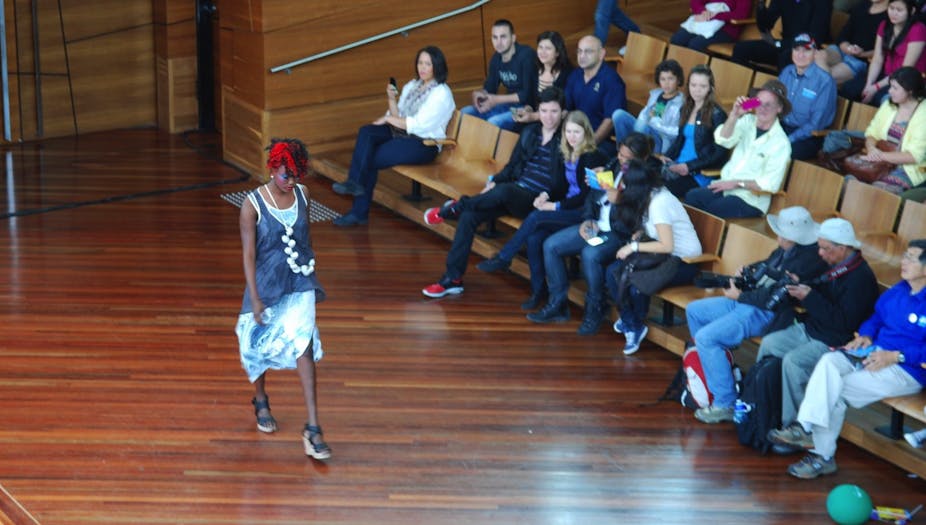Why do young people drop out of school? Many factors influence this critical decision. These include the cost of education (think rising fees, cost of transportation, materials, textbooks and uniforms), lack of support in the classroom for students with complex needs, and anxiety about succeeding in a competitive, individualistic and performance-driven education system.
Leaving school early is a predictor of social and economic disadvantage. The Australian Bureau of Statistics reports that:
The number of years that a person is engaged in formal education is one of the best predictors of positive social and economic outcomes.
The risks of leaving school early are greater for young people affected by economic and social hardship. It is no coincidence that those at highest risk are refugee youth, youth with disabilities and Indigenous youth. They already have a shaky foundation in terms of employment opportunities, risk of entering the criminal justice system and experiences of social exclusion.
A recent report issued by the Centre for Multicultural Youth and commissioned by the Lord Mayor’s Charitable Foundation describes gaps in the education system for young people from refugee backgrounds. The result is:
… high levels of school drop-out and consistently higher rates of unemployment.
(I acknowledge that the word refugee is a contested term that stigmatises as much as it provides context for the experience of humanitarian migration. A person who has had that experience does not remain a refugee for life.)
The researchers note that these issues persist despite both young people and their families being strongly motivated to succeed in education, contrary to public views about “lazy” youth. The reasons underlying these drop-out rates are complex. They include language barriers and lack of support in the classroom, pre-migration experiences of trauma that have an ongoing impact on learning, institutional racism, and lack of connection between school and the world beyond.
Creating alternative pathways
These issues are well recognised, and documented in a number of reports that advocate for alternative programs to overcome these barriers.
As a direct response, The Social Studio has endeavoured to carve out a space for an alternative model of education, to fill gaps in the existing system for young people from new migrant and refugee backgrounds. A fashion studio, retail shop and café provide the context for TAFE training.
Students participate in The Social Studio’s fashion design, clothing production, retail and hospitality operations, which provide an engaging and dynamic context for learning. The training combines work experience, practical skills, classroom education and exposure to industry professionals, responding to the interests, skills and talents of the young people involved.
Programs are offered in partnership with RMIT School of Fashion and William Angliss Institute. The resulting qualifications range from Certificate I in Hospitality through to Certificate IV in Textile Design and Development.
The Social Studio also aims to change public perceptions about the skills, talents and experiences that new migrant communities contribute to Australia’s social fabric. Popular culture is a powerful vehicle for social change. Some of The Social Studio’s success stories include graduates continuing on to higher education, starting up their own businesses and finding long-term employment in related industries.
Drop-out costs make training cheap
It is evident in both research and practice that alternative vocational training programs are effective for young people at risk of dropping out of mainstream school. However, in a political climate of increasing cuts to TAFE and university funding at state and federal levels, the opportunity for these programs is fast diminishing.
The benefits to society of supporting young people in their educational journey and pathways to employment are significant. They include less risk of mental and physical health problems, lower crime rates, a more productive workforce and a reduced burden on the welfare system. And yet the will to act on the gaps in young people’s education and career paths is seriously lacking.

Often there is a perception that supportive and flexible training programs will be expensive and wasteful. At a cost of about A$4000 to A$22,000 per student per year, vocational training might sound expensive, but these costs are slight in comparison to the social and economic cost of not keeping young people in school.
The cost of long-term unemployment to Australia’s social well-being is estimated at $3.3 billion per year. Civil Liberties Australia report that the costs of prison add up to an average of $111,325 per prisoner per year. The federal Department of Health reports that the average cost of hospitalisation for each mental health patient is about $365,000 per year.
Education for all must be valued
There is no guarantee that education will keep every young person out of prison or in a job. It is obvious, however, that investment in education for young people at the critical juncture of school and higher education can lead to great economic and social benefits further down the track, both for the individual and society at large.
Meanwhile, in the shadow of last month’s federal budget, young unemployed people are facing major cuts to welfare payments, including the controversial decision to make them wait up to six months before being eligible for Youth Allowance. This is a recipe for poverty and all the social problems that follow.
Employment in general for young people is uncertain. Short-term contracts, an increasingly casualised workforce and self-employment are becoming standard across public and private sectors. At a time when manufacturing is rapidly moving offshore and the future of local employment lies in technology, innovation and knowledge industries, education is going to be even more crucial in securing decent work opportunities for young Australians.
The opportunity to “earn or learn” is only possible when education is valued, funded and made available to young Australians from all walks of life.
See the rest of the Another Country: Youth in Australia series here.

